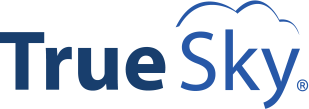10 Budgeting and Forecasting Tips for CEOs

Photo credit: Sebastiaan ter Burg via Flickr
Being a CEO isn’t easy. It’s a role that can be hard to define at times, and with a hand in everything from marketing to financing, many CEOs end up drowning themselves in too much work to really invest time where they’re needed: the long-term vision and strategy for their company.
Two of the most important areas of a CEO’s focus are budgeting and forecasting, a pair of interconnected and mutually dependent factors that must be closely monitored and accurately analyzed before they make or break a company’s future.
The terms budgeting and forecasting relate closely to one another in the world of business, although they are not to be confused. Yet, even experienced business professionals sometimes treat them interchangeably. Both, however, should be clearly defined and understood before any action can be taken.
In a recent Quora thread, entrepreneur James Burdine explains the difference between the two:
“Budgeting is a planning exercise that takes place prior to the end of one fiscal year (and after a strategic planning/goal setting process) where revenue, expenses, profitability plus balance sheet items and cash flows for the next 12 months (or longer) are calculated … Forecasting is an assessment exercise that takes place as the fiscal year is underway.”
Essentially two ends of a yearly cycle, budgeting and forecasting rely on data collected over the course of the year, plugged into various formulas that attempt to predict future conditions upon which the business will build its plan of action. Budgeting requires CEOs to consider historical data, mostly from the previous year, as well as his or her goals for the company and potential variables such as projected technological innovations or changes in the market. Forecasting is a much more dynamic activity which takes all of the data and variables into consideration and generates predictions for the coming year which are constantly subject to change.
In the same thread, Palo Alto founder Tim Berry notes that many people relate budgeting and forecasting directly to their company’s finances.
“If you watch over time, you’ll find that people tend to associate forecast more with revenue generation, as in sales; and budget more with expense management, as in spending budgets.”
Most business owners and company executives would agree, however, that budgeting and forecasting are functionally different but interrelated ends of analyzing a company’s finances, production, and operation and plugging that data into a master plan.
So, as a CEO, how can you ensure that you are doing the right thing when you budget and forecast for the fiscal year? While there is no simple, all-encompassing answer to this question, there are many tried and tested techniques for budgeting and forecasting to keep your company head and shoulders over the competition.
10 Budgeting and Forecasting Tips for CEOs

Photo credit: Ken Teegardin via Flickr
1. Know where you want to end up.
Everyone knows that you can’t have a plan without a goal in mind. With no goals, there is no direction, so it’s crucial that you spend some time reflecting on and clearly defining your objectives for the company, both long-term and short-term.
When you have solid goals in place, not only do you make the planning process easier, but you also provide a uniting factor for your entire team. Working towards common goals brings people together naturally and promotes synergy within the workplace. Moreover, everyone can share in the benefits and feeling of accomplishment when those goals are met.
2. Involve your team.
Aside from maintaining workplace community and synergy, making your budgeting and forecasting processes a team effort carries a slew of advantages for the CEO and the company. For starters, having a financial team to handle the complicated mathematics and logistics is a must. You may be a wiz at spearheading a company to the top, but remember, you’re not an expert in everything.
Teamwork is especially important on the forecasting end. A CEO can’t be everywhere at every hour of the day, so you need to allow your teammates to serve as your trend informants and advisors so you can have a continual influx of fresh data from each department within your company. In addition, involving your team provides you with a variety of perspectives so you can get a more well-rounded picture of where your company is now and where it could be headed.
3. Be a scenario planner.
A major part of leading a company is predicting the future and retaining the ability to adapt to potential scenarios and changing economic factors. Because of the dynamic and often unpredictable nature of the market, technology, and even competition, it is critical that a CEO is able to forecast strategically and roll with the unexpected punches of his or her industry.
In an article published by Forbes earlier this year, contributor Jay Ogilvy shares a unique but useful scenario planning strategy for CEOs in eight steps. “Scenarios are alternate futures in which today’s decisions may play out,” Ogilvy says. “They are stories with beginnings, middles and ends. Good scenarios have twists and turns that show how the environment might change over time.”
In a nutshell, Ogilvy’s eight recommended steps to creating virtual but possible business scenarios include 1) identifying the focal issue, 2) identifying key factors, 3) identifying external forces, 4) brainstorming for critical uncertainties, 5) filtering out the “most likely scenarios and how to navigate them, 6) telling the “story” of each scenario, 7) figuring out the implications of each scenario and the company’s options, and 8) and moving forward with one scenario based on “early indicators.”

Photo credit: Ken Teegardin via Flickr
4. But keep a separate strategy.
Another one of Ogilvy’s tips ties into but is not necessarily dependent on the scenario building process, and that is keeping an objective strategy. Sure, short term action plans may shift because of changing demands, shortage, or other unforeseen factors in the market, but you will make the most out of your forecasting process if you maintain a distinct, objective strategy in light of variables.
In short, your strategy should have little to do with potential scenarios and much more to do with your overall goals for your company for that year. “Think of scenarios as different hands of cards you might be dealt; think of strategies as the way you would play those cards,” Ogilvy says. In fact, he goes on to say that scenarios can be great tests for a strategy. Putting theories into virtual practice before they are implemented in the real world is essential to fool proofing the real plan when the time comes for action.
5. Account for everything.
When budgeting and forecasting, it is all too common for CEOs to miss important details, especially when they are crunched for time. Nevertheless, every expense, variable, and minor goal must be accounted for in these processes. As a CEO, you need to keep records of every component of the company expenditure throughout the fiscal year, from marketing campaigns to paper clip supplies. You might be surprised at how the little things can add up.
As for forecasting, once you have your budget settled, take into account every potentiality for the new fiscal year underway. Pay close attention to changes in the market, and don’t rely solely on historical data. Assign knowledgeable team members the tasks of trend watching, listening to clients and customers, and keeping an eye on competition, and remember to factor in the minute details of their reports when you create the business forecast.

Photo credit: Nguyen Hung Vu via Flickr
6. Make tradeoffs when appropriate.
Sometimes you will run into situations where you’ll wish you had budgeted for something, well, outside of your budget. It may be tempting to overspend for whatever that item or program may be, but if it’s really that important to your company, you need to make a smart tradeoff instead.
However, you should only make the tradeoff if it will render better results than sticking to what you originally budgeted for. “You have a finite amount of resources available to you,” says author Gene Siciliano, CMC, CPA. “If you must spend money for something you didn’t budget, then decide what budgeted expense can be removed to "finance" the new item.” On that note, Siciliano also cautions CEOs against overspending in spite of the investments’ immediate benefits. Staying out of debt has its benefits, too.
7. Keep profit flow and cash flow targets.
Siciliano provides another great tip in his article about controlling your budget: distinguishing between cash flow and profit. Every budget should have profit targets and cash flow targets, because the two bottom line measures are very different and they require different kinds of attention to control them,” Siciliano says.
Sometimes it’s easy to forget about cash flow when your profits seem to be doing particularly well. But at the end of the day, it’s the total equation that really counts, profit, expenses, the remaining cash – all of it. To keep your company from missing the bottom line, set solid targets for both profit flow and cash flow. You can create yearly targets at the outset of each fiscal year as well as quarterly targets to stay off financial roller coasters.
8. Forecast…and re-forecast.
When most CEOs and business managers think about forecasting, they typically envision a grand scale prediction about the upcoming business year at the year’s outset. This idea is true to an extent. But when unexpected changes occur over the course of the year, which usually happens, those in charge of forecasting need to re-evaluate their predictions.
By plugging new data into your forecast at the end of each quarter or month, essentially re-forecasting, as Accountingweb CEO Christian Wielage calls is, you are keeping your company up to speed with the ever-changing world around it. “When companies have a healthy forecasting process, they cultivate a better decision-making process,” Wielage says. “They aren’t just flying by the seat of their pants.”

Photo Credit: Texas A&M University via Flickr
9. Use Competitive Bids.
Always have vendors pay you for what you’re worth. Competitive bidding, which allows other companies to openly compete for your service or product, is an absolutely essential practice to ensure that you get the most out of the products or services you have to offer. The reverse is true as well; when you’re looking for supplies and services for your own company, shopping in a competitive market along with a little negotiation will get you the lowest prices possible. This will undoubtedly have a positive impact on your overall budget.
CEO Lynnette Khalfani-Cox explains the benefits of competitive bidding in her article on DailyFinance. “Always comparison shop,” she says. “By getting lenders to vie for your business, and offer the most attractive rates and terms for which you qualify, you can save thousands of dollars.” Also, assigning continual price-watching jobs to team members will save you time and effort when it actually comes time to buy and sell.
10. Use the right tools.
No matter how brilliant you and your financial management team are, you will never be able to keep your budgeting and forecasting up to speed without the right tools for the job. Even the smallest of companies can benefit from integrating planning software into their budgeting and forecasting processes in order to manage finances and generate accurate predictions for the future of the company using charts, graphs, calculators, and spreadsheets.
Also, be aware that technology is constantly evolving, and it does so faster now than it ever has. As a result, it is critical that you keep your software up-do-date and invest in new programs when necessary. Cloud systems are quickly becoming the standard for business software and data back-up, for example, so keep that in mind if you are currently considering buying new software for budgeting and forecasting. In addition, keep mobility in mind as this will make communication and accessibility much easier for you and your team.
When you’re growing your business, it is crucial to maintain financial parameters and targets every step of the way. By setting goals, involving knowledgeable people in the process, developing flexible plans, and keeping your tools up to date, budgeting and forecasting should be as seamless as possible. Even though life throws its curveballs from time to time, following these tips will help ensure that you and your company are prepared to tackle anything and emerge victorious in your industry.



